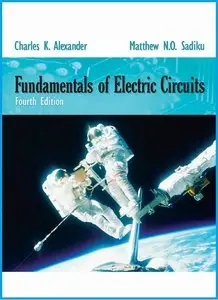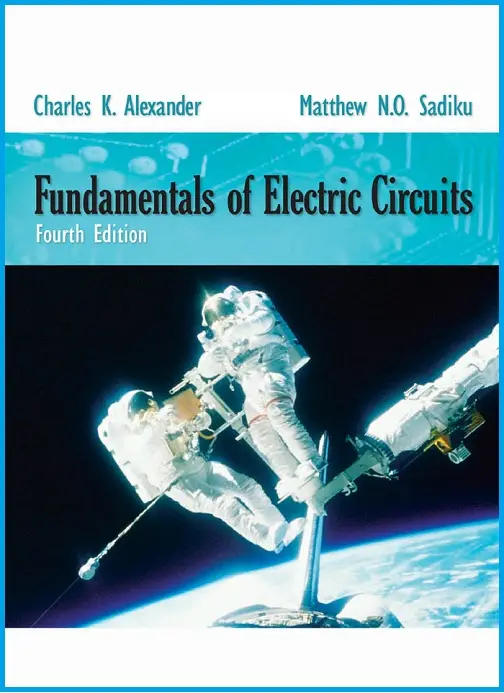Fundamentals of Electric Circuits, 4th edition by Charles K. Alexander, Matthew N.O. Sadiku
English | 2008 | ISBN: 0073529559, 0077263197 | 901 pages | PDF | 15,2 MB
English | 2008 | ISBN: 0073529559, 0077263197 | 901 pages | PDF | 15,2 MB
New to This Edition
A course in circuit analysis is perhaps the first exposure students have to electrical engineering. This is also a place where we can enhance
some of the skills that they will later need as they learn how to design.
In the fourth edition, we have included a very significant new feature to help students enhance skills that are an important part of the design process. We call this new feature, design a problem.
We know it is not possible to fully develop a student’s design skills in a fundamental course like circuits. To fully develop design skills a student needs a design experience normally reserved for their senior year. This does not mean that some of those skills cannot be developed and exercised in a circuits course. The text already included openended questions that help students use creativity, which is an important part of learning how to design. We already have some questions that are open desired to add much more into our text in this important
area and have developed an approach to do just that. When we develop problems for the student to solve our goal is that in solving the prob-
lem the student learn more about the theory and the problem solving process. Why not have the students design problems like we do? That
is exactly what we will do in each chapter. Within the normal problem set, we have a set of problems where we ask the student to design a
problem. This will have two very important results. The first will be a better understanding of the basic theory and the second will be the
enhancement of some of the student’s basic design skills.
We are making effective use of the principle of learning by teaching. Essentially we all learn better when we teach a subject. Designing effective problems is a key part of the teaching process. Students should also be encouraged to develop problems, when appropriate, which have nice numbers and do not necessarily overemphasize complicated mathematical manipulations.
Additionally we have changed almost 40% of the Practice Problems with the idea to better reflect more real component values and to help the student better understand the problem and have added 121 design a problem problems. We have also changed and added a total of 357 end-of-chapter problems (this number contains the new design a problem problems). This brings up a very important advantage to our textbook, we have a total of 2404 Examples, Practice Problems, Review Questions, and end-of-chapter problems!



